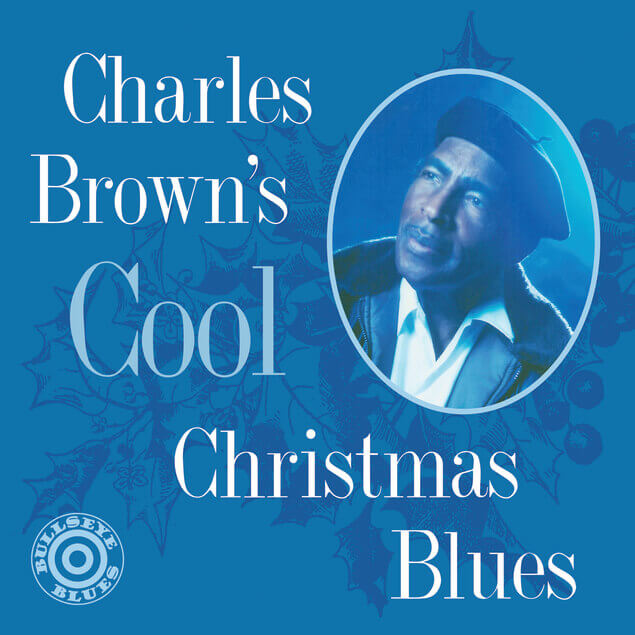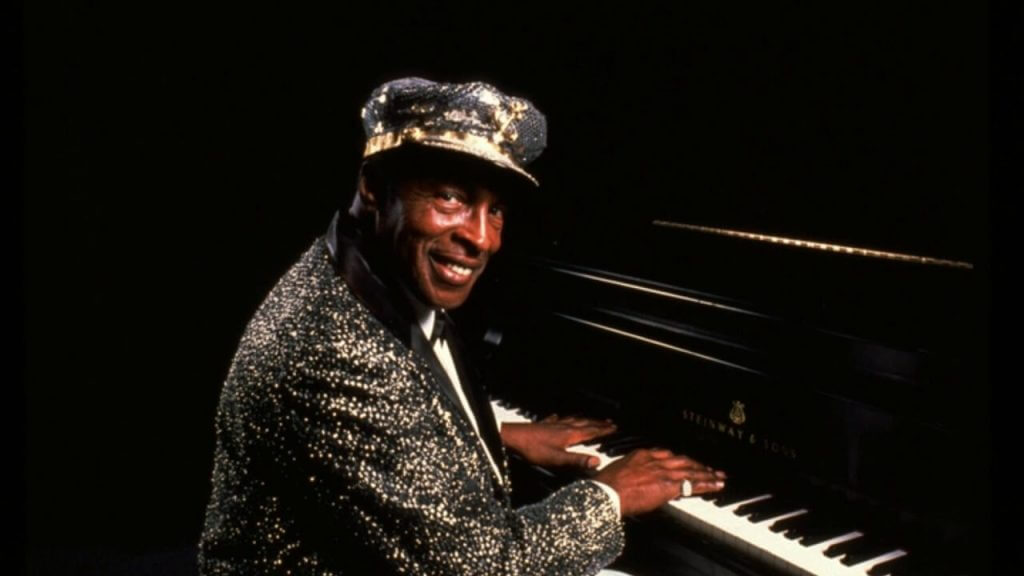Craft Recordings announces the reissue of Charles Brown’s Cool Christmas Blues on vinyl. Due out November 13th and available to pre-order now, this pressing marks the very first vinyl release for the blues titan’s 1994 Christmas album. In addition to the wide release, Craft’s online store will offer an exclusive white and blue marble vinyl variant, limited to 350 copies worldwide. Lacquers were cut by George Horn and Anne-Marie Suenram at Fantasy Studios, while the vinyl was pressed at Noiseland Industries.

Nominated for Best Traditional Blues Album at the 1995 GRAMMY® Awards, Charles Brown’s Cool Christmas Blues offers a warm, laid-back set of primarily original material—including Brown’s modern yuletide classics “Please Come Home for Christmas” and the U.S. Billboard R&B chart Top 10 hit “Merry Christmas Baby.” The artist also performs lesser-known gems like “Santa’s Blues” and “To Someone That I Love,” while he puts his own stellar twist on “Silent Night.”
Recorded in San Francisco, the session features Brown on vocals, piano and celeste, with Clifford Solomon on tenor saxophone, Dannon Caron on guitar, Ruth Davies on acoustic bass and Gaylord Birch on drums. BB King’s longtime sideman Bobby Forte also makes a special appearance on tenor saxophone, while the “Godfather of Rhythm and Blues” Johnny Otis jumps in on the vibes.
Brown also revisits two of his most famous songs, including “Merry Christmas Baby.” While the tune is credited to Lou Baxter and Brown’s bandmate, Johnny Moore, it has long been noted that Brown was instrumental in co-writing the classic track. Although the true story behind the composition has never been confirmed, it was Brown, unmistakably, who made the song a hit when he recorded it alongside Moore with the Three Blazers in 1947. Released in November, “Merry Christmas Baby” added a wink and a romantic twist to the standard holiday fare—and America loved it. That season, the song went to No.3 on the Billboard R&B Juke Box chart, while it would become a holiday cannon over the decades. It has since been covered by many of music’s greats, including Elvis Presley, Bonnie Raitt, John Legend and, perhaps most famously, Otis Redding.
The artist followed with “Please Come Home for Christmas” in 1960. The song, written and recorded by Brown, reentered the charts year-over-year—for nine seasons total—eventually hitting the top of Billboard’s Christmas Singles in 1972. Like its predecessor, the tune has become a holiday staple. It was notably covered by the Eagles in 1978 (their version hit the Top 20—a rare occurrence for a holiday track at that time) and by Bon Jovi in 1992. The song has also been popularly covered by the likes of Willie Nelson, Martina McBride and Kelly Clarkson, among many others.
West Coast blues pioneer Charles Brown (1922–1999) was an influential singer, songwriter and pianist, known for his soft, laid-back stylings. The classically trained, Texas-born artist relocated to Los Angeles in the early ’40s, where he soon found success as the singer and pianist in Johnny Moore’s Three Blazers. The group, which followed the popular jazz-influenced blues-club style of the time, scored their first R&B hit with “Drifting Blues.” The trio continued to chart throughout the decade, with songs like “Sunny Road,” “So Long,” “New Orleans Blues” and, of course, “Merry Christmas Baby.”
Brown embarked on a prolific solo career in 1949, leading his own band and releasing a steady stream of R&B hits throughout the ’50s, including “Get Yourself Another Fool,” “Trouble Blues,” “Black Night” and “Please Come Home for Christmas.”
While his career slowed in the ’70s, Brown enjoyed a major career resurgence in the ’80s and ’90s, gaining a new generation of fans. In his mid-60s, he embarked on the road with Bonnie Raitt and released a slew of new albums, including One More for the Road (1986), as well as the GRAMMY®-nominated titles All My Life (1990) and Someone to Love (1992). His later work was also widely recognized by his peers, garnering him three Blues Music Awards and 17 nominations. Brown’s body of work and artistic impact was celebrated throughout his final decade. The artist, who influenced many of the biggest names in R&B and blues—including Ray Charles, Fats Domino, Sam Cooke and Chuck Berry—was inducted into the Blues Hall of Fame in 1996 and, just months after his passing, into the Rock and Roll Hall of Fame in 1999. Perhaps his crowning achievement, however, was becoming a recipient of the National Heritage Fellowship in 1997. Presented by the National Endowment for the Arts, the fellowship marks the highest honor that can be bestowed upon traditional and folk artists in the U.S.
While his career slowed in the ’70s, Brown enjoyed a major career resurgence in the ’80s and ’90s, gaining a new generation of fans. In his mid-60s, he embarked on the road with Bonnie Raitt and released a slew of new albums, including One More for the Road (1986), as well as the GRAMMY®-nominated titles All My Life (1990) and Someone to Love (1992). His later work was also widely recognized by his peers, garnering him three Blues Music Awards and 17 nominations. Brown’s body of work and artistic impact was celebrated throughout his final decade. The artist, who influenced many of the biggest names in R&B and blues—including Ray Charles, Fats Domino, Sam Cooke and Chuck Berry—was inducted into the Blues Hall of Fame in 1996 and, just months after his passing, into the Rock and Roll Hall of Fame in 1999. Perhaps his crowning achievement, however, was becoming a recipient of the National Heritage Fellowship in 1997. Presented by the National Endowment for the Arts, the fellowship marks the highest honor that can be bestowed upon traditional and folk artists in the U.S.


